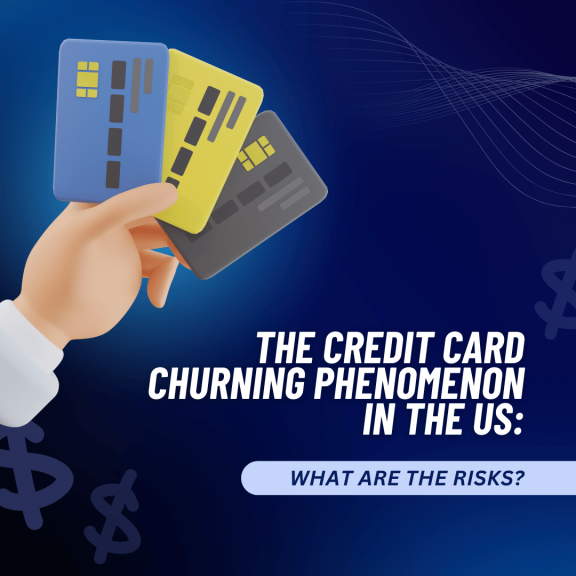The Credit Card Churning Phenomenon in the US: Is It Legal? Is It Worth It? What Are the Risks?

Advertisements
In the dynamic landscape of American personal finance, a strategy known as “credit card churning” has gained significant traction among savvy consumers.
At its core, churning involves applying for, receiving, and then often canceling credit cards to repeatedly earn sign-up bonuses, miles, points, or cash back rewards.
It’s a sophisticated game of maximizing benefits, but one that comes with its own set of rules, rewards, and considerable risks.
What Exactly is Credit Card Churning?
Credit card churning is more than just getting a new credit card. It’s a deliberate, systematic approach to extracting maximum value from introductory offers.
Typically, these offers involve a large bonus (e.g., 50,000 airline miles, $200 cashback) for meeting a specific spending requirement within a certain timeframe, usually the first three months.
A typical churner might:
Identify a lucrative sign-up bonus from a new credit card;
Apply for the card, ensuring they meet the issuer’s eligibility criteria;
Meet the minimum spending requirement (often by shifting regular expenses to the new card or through legitimate manufactured spending techniques)’;
Receive the bonus;
After a certain period (usually 6-12 months, or once the annual fee hits), they might cancel the card or downgrade it to a no-annual-fee version to avoid recurring charges, only to repeat the process with a different card or even the same card after a cooling-off period.
The allure is clear: accumulating substantial rewards that can translate into free flights, hotel stays, or significant cash savings, all by strategically managing credit.
Is Credit Card Churning Legal in the US?
This is often the first question aspiring churners ask, and the answer is a resounding yes, credit card churning is perfectly legal in the United States.
There are no laws against applying for multiple credit cards, closing accounts, or trying to maximize promotional offers.
However, “legal” doesn’t mean “without rules” or “without consequences.” While the act of churning itself is legal, misrepresenting information on an application, or engaging in fraudulent activities to meet spending requirements (e.g., using fake transactions, money laundering), is strictly illegal and can lead to severe penalties.
Card issuers, on their part, are fully aware of churning. They implement various mechanisms to curb it, such as:
“Once per Lifetime” or “Once per X Years” rules: Many issuers (like Chase with its infamous 5/24 rule, or Amex with its once-per-lifetime bonus rule) restrict how often you can receive a sign-up bonus for a specific product.
Annual Fee Policies: Some cards offer a first-year annual fee waiver, while others charge it upfront, making the decision to keep or cancel more complex.
Account Closures: Banks reserve the right to close accounts, even if no fraudulent activity occurred, if they suspect abuse of their systems or perceive you as unprofitable. This is rare for legitimate churners but can happen if you push the boundaries too aggressively.
So, while the practice is legal, adhering to the terms and conditions of each card issuer is paramount.
Is Credit Card Churning Worth It? (The Potential Rewards)
For many, the answer is a definitive yes. The rewards can be substantial, offering experiences or savings that would be difficult to achieve otherwise.
The Upsides:
Significant Travel Savings: This is the primary driver for most churners. Accumulating hundreds of thousands of miles or points can translate into business or first-class flights, luxury hotel stays, or even round-the-world trips for a fraction of the retail cost.
Cashback and Statement Credits: For those less interested in travel, many cards offer large cashback bonuses or statement credits that effectively put money back in your pocket.
Enhanced Financial Literacy: Churning requires meticulous tracking of spending, application dates, bonus requirements, and credit scores, which can inadvertently improve one’s overall financial management skills.
Access to Premium Perks: Many premium travel cards come with benefits like airport lounge access, travel insurance, priority boarding, and free checked bags, even after the initial bonus is spent.
Consider the potential value: a single sign-up bonus of 80,000 airline miles could fund a round-trip domestic flight or contribute significantly to an international one, easily saving hundreds, if not thousands, of dollars. For families or frequent travelers, the savings multiply.
What Are the Risks and Downsides of Credit Card Churning?
While the rewards are enticing, churning is not a strategy for everyone. It carries notable risks that can negatively impact your financial health if not managed carefully.
Impact on Your Credit Score
Hard Inquiries: Every credit card application results in a “hard inquiry” on your credit report, which can temporarily lower your credit score by a few points. While the impact is usually minor and fades within 1-2 years, too many inquiries in a short period can signal risk to lenders.
Average Age of Accounts (AAoA): Opening new accounts lowers your AAoA, a factor in your credit score. If you frequently close old accounts, this further exacerbates the issue.
Credit Utilization Ratio: While opening new cards increases your total available credit, failing to manage spending carefully could lead to higher utilization if you carry balances, negatively impacting your score.
Account Closures: When you close an account, especially an older one, it removes that credit line from your utilization calculation and can slightly reduce your AAoA over time.
Debt Risk
Minimum Spending Requirements: The biggest trap for novice churners. To earn the bonus, you must spend a certain amount, often $3,000-$5,000 in three months. If you don’t have the natural spending to meet this, you might be tempted to overspend on unnecessary items or manufacture spending in ways that incur fees.
High-Interest Rates: If you fail to pay off your balance in full each month, the high-interest rates on credit cards (which often accompany great rewards) will quickly negate any bonus earned. Carrying a balance makes churning unprofitable.
Account Management Complexity
Juggling Multiple Accounts: Churning involves managing several credit cards, each with different due dates, minimum spending requirements, annual fees, and reward structures. Missing a payment or a spending deadline can be costly.
Annual Fees: Many lucrative cards come with annual fees, which must be factored into the “worth it” equation. You need to be diligent about tracking when these fees hit and deciding whether to keep, downgrade, or cancel the card.
Issuer Shutdowns
While rare for legitimate activity, banks can and do close accounts, and in extreme cases, may even “claw back” bonuses if they suspect abuse. This could also lead to being blacklisted by a particular issuer, preventing you from applying for their cards in the future.
Who is Credit Card Churning For?
Churning is not a casual hobby. It’s best suited for individuals who are:
Disciplined with their finances: You must be able to pay off your credit card balances in full, every single month.
Responsible with credit: You have an excellent credit score (typically 700+) to qualify for premium rewards cards.
Organized: You need to track application dates, spending deadlines, annual fees, and reward redemptions meticulously. Spreadsheets or dedicated apps are often used.
Patient: Some strategies require waiting periods, and bonuses may take time to post.
Have predictable, sufficient spending: You can naturally meet the minimum spending requirements without going into debt or buying unnecessary items.
Credit card churning in the US is a powerful strategy that, when executed correctly, can unlock significant travel experiences and financial benefits.
It’s legal and can be highly rewarding for the disciplined and financially savvy individual.
However, it’s also a high-stakes game that demands meticulous organization, unwavering commitment to paying off balances, and a deep understanding of its potential impact on your credit health.
For those willing to put in the effort and manage the risks, the world of travel and rewards can truly open up.
For others, the potential for debt and credit score damage outweighs the allure of the freebies. Choose wisely, and always prioritize your financial well-being.
Related content

Best Personal Loan Platforms in the US (2025 Edition): SoFi, Upstart, Marcus & More

Best High-Yield Savings Accounts in the US in 2025

Best Credit Cards with No Foreign Transaction Fees: Ideal for Frequent Travelers

The Complete Beginner’s Guide: How to Use Your First Credit Card in the US Responsibly

0% APR Credit Cards: How to Take Advantage and What Traps to Avoid
